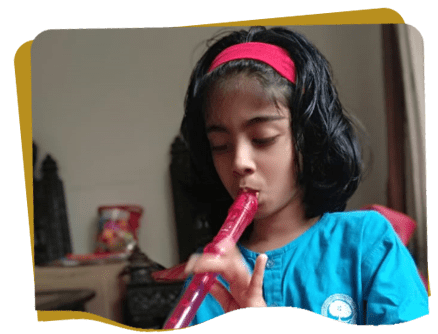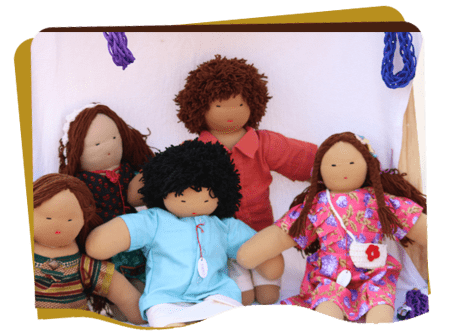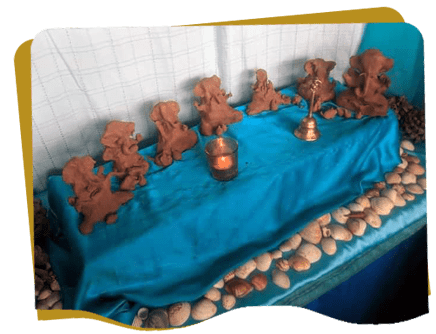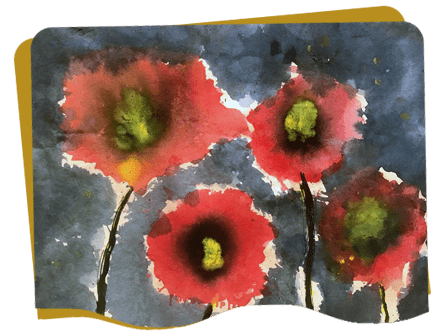Music
Music is an important element of the Waldorf curriculum. According to Rudolf Steiner, the human being is a musical being, and the making of music is essential in experiencing what it is to be fully human. Music in the Waldorf curriculum awakens and nurtures the deep inner life of the child.
As the main lesson curriculum follows the very specific stages of child development, so also does the music curriculum. Engaging the soul activities of thinking, feeling, and willing in the child, the study and experience of the various elements in music arouse and cultivate the very forces necessary to be able to meet the challenges of the world with enthusiasm and confidence.


Handwork
True education aims to serve the needs of the whole human being, Head, Heart and Hands are brought into a particular relationship with each other in the practice of handwork and crafts. In these lessons pupils have the opportunity to ‘tangibly grasp’ the world and give expression to their latent creativity.
Handwork and craft activities not only serve to educate the pupils in the nature and processes involved with the different materials, the use of tools and equipment, etc., but there is also inherent the therapeutic aspect from which the pupils benefit.
Clay
Steiner emphasized the artistic value of young children “handling clay” and even “struggling with [such] outer materials.” Their exertion helps them develop willpower and connect actively with the world. In his words:
...Whatever subject is being taught, the child’s inherent impulse to play, which is an intrinsic part of his or her makeup, can be guided into artistic activities. And when children enter the first and second grades, they are perfectly able to make this transition. However clumsy children of six or seven may be when modeling, painting, or finding their way into music and poetry, if teachers know how to permeate their lessons with artistry, even young children as miniature sculptors or painters can begin to have the experience that human nature does not end at the fingertips, that is, at the periphery of the skin, but flows out into the world. The adult being is growing in children whenever they put their being into handling clay [Ton], wood, or paints.
Plentiful earth materials like sand, dirt, and clay lend themselves naturally and readily to modeling activity outdoors and indoors. We found that clay is a wonderfully malleable material and ideal for engaging and invigorating children in the early grades.


Painting
Painting on damp paper enables us to see and experience the flowing nature of color. Children as young as two and three can handle a paintbrush and become immersed in the process. Imaginations become active as scenes and objects are discovered in the painting.
Within Waldorf education these functions are best understood as head, heart, and hands. Thinking is what a traditional education typically focuses on. Attention is almost solely on cultivating the mind. Throughout the Waldorf approach to education all three qualities are developed. The heart is connected with feeling. This is the most important part of answering the question of why art is so integral to the Waldorf approach to education. When a child is painting, drawing, or using other mediums to create, they experience joy. Through that joy a child participates and experiences what they’re learning. They learn more effectively and enjoy the process more. Steiner’s intention was that all kinds of artistic modalities be utilized across all subjects. Steiner also observed what occurred when children work using their hands.


